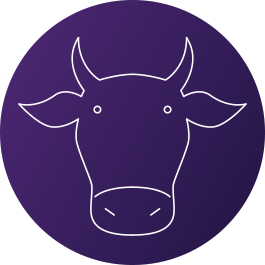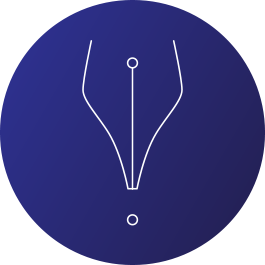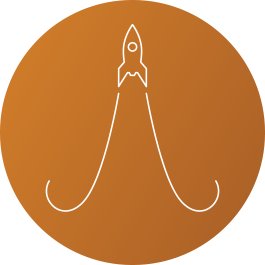I highly recommend you read these books and form your own takes. But if you only have 45–90 seconds time blocks, here is a list of times to go through the actionable ideas from each book.
Find Your Element by Ken Robinson (60 seconds read)
Start With Why by Simon Sinek (45 seconds read)
Purple Cow by Seth Godin (30 seconds read)
Tipping Point by Malcolm Gladwell (30 seconds read)
Getting Things Done by David Allen (45 seconds read)
The Seven Habits Of Highly Effective People by Stephen Covey (60 seconds read)
The 4-Hour Workweek by Tim Ferriss (90 seconds read)
The Innovator’s Dilemma by Clayton Christensen (60 seconds read)
The Lean Startup by Eric Ries (45 seconds read)
Zero to One by Peter Thiel (60 seconds read)
Find Your Element
by Ken Robinson
· Expose yourself to as many new opportunities as possible to discover your unrealized aptitudes.
· Strive to have a growth mindset. It will allow you to develop and improve your abilities.
· Find your passions, things you do without noticing the passage of time.
· Forge your own path, along with an understanding of your happiness, instead of blindly seeking wealth, immediate gratification, or other people’s definitions of happiness.
· Don’t plan your life when you’re young because life is unpredictable.
· Don’t assume you are bad at something because you performed poorly in that subject in school. Standardized tests only measure one kind of human intelligence and schools only cater to a few learning styles.
· Every person is special and different because of their genetic makeup (every human who ever existed in history has their own genes) and their environment (everyone has their unique mix of family, friends, and location).
· If you accept you can’t predict or control the future, you will discover many new opportunities.
· Experiencing positive emotions from your passion reduces stress, chronic pain, and addictions. It also improves sleep and concentration.
· Finding a group of people who share your passion can be very beneficial, or even necessary, for both you and other members of the group to realize personal goals.
Start With Why
by Simon Sinek
· Think inside out (starting with why), not outside in (starting with what). Communicate the why as it fosters a sense of belonging.
· The goal is to do business with people who believe what you believe.
· People don’t buy what you do, they buy why you do it. What you do simply proves what you believe.
· Excited employees and customers who believe in your cause are the most powerful resources an organization can have.
· Financial incentives or punishments do not motivate people on a deep and emotional level.
· Customer manipulation may work in the short term, but it doesn’t foster trust and is ultimately counterproductive.
· The Golden Circle consists of three concentric circles. The what is the outer layer, the how is middle layer, and the why is the core.
· Making profit is a result of the what and the how, not the why.
· The Law of Diffusion on innovation breaks down to 2.5% innovators, 13.5% early adapters, 34% early majority, 34% late majority and 16% laggards. If you want mass-market success, you have to achieve a 15–18% tipping point.
· The early majority won’t accept something until early adapters have tried it and accepted it, and you won’t get early adapters until they believe in what you have.
Purple Cow
by Seth Godin
· Take risks at being remarkable, and don’t worry about criticism.
· Target the people who are both willing to try new things and very vocal at spreading the word to others.
· Invent the product with marketing.
· Target and measure your marketing effectively.
· Don’t emulate the leader, because you’ll never learn the process of turning risks into success.
· The traditional form of advertising is no longer effective because in today’s overwhelmingly advertised world capturing the consumer’s attention is almost impossible.
· In today’s crowded marketplace, there is no room for “ordinary.”
· Being ridiculed can be a good thing, as it spreads word about you and your product.
Tipping Point
by Malcolm Gladwell
· To spread an idea, you must make sure it sticks first. It has to be something special, catchy, unique, and remarkable to cut through the market noise.
· Keep the group smaller than 150 if the goal is to effectively spread a message.
· The spread of ideas is similar in behavior to the spread of epidemics.
· The tipping point is when ideas spread from an initial niche user base into the mass majority.
· A select few types of people are generally responsible for ideas to spread: connectors, salesmen, and mavens.
· External elements influence our behavior. Such influence is generally greater than what we perceive it to be.
· Small changes in context caused by external elements can have a big ripple effect.
Getting Things Done
by David Allen
· Focus. When other thoughts enter the mind, record them on an external nearby Thought Bucket.
· Empty the Thought Bucket weekly and organize it.
· Remove unimportant items, finish 2-minute tasks, and enter deadlines, or appointments in your calendar.
· Practice outcome thinking by having a project list that tracks steps leading to desired goals. The most urgent step on the project list goes to the Next Action list.
· The Next Action list should stay with you at all times so you can choose to act on them when time frees up.
· The Waiting For list can help expedite things.
· The Tickler File consists of 31 days and 12 months into the future, and is for time sensitive reminders.
· The Someday/Maybe list is for ideas in the future that are not concrete projects yet.
· Set up a functional workplace to create a cockpit of control that eases your mind.
· Review and update all of your lists weekly.
· Natural planning turns ambiguous ideas into brainstorming sessions that reduce the fog and provide clarity into actionable steps.
· Don’t multi-task. Focus 100% of your mental capacity on the task at hand.
· Our brain’s nature is to think. Thus, thoughts might enter our mind that distract us from the current tasks.
· Daily to-do lists are inefficient because of their warped view of time.
The Seven Habits of Highly Effective People
by Stephen Covey
· Effectively integrating into the world means aligning personal paradigms with universal principles.
· “Sharpen the Saw” to stay effective. Stay physically fit by exercising. Stay mentally healthy by learning new things. Stay socially and emotionally engaged by developing positive relationships. Maintain spiritual health by confronting and reflecting on your own values.
· Be proactive and take control of your own fate.
· Begin with the end in mind and set long term goals with an understanding of your personal mission statement.
· Visualize the outcome of every step toward your goal so it will be easier to translate into concrete actions.
· “Put First Things First” by prioritizing things that bring you toward your goals and are consistent with your values or norms.
· Practice the Win-Win mentality. It will create good relationships, mutual trust, and long term benefits.
· Forming stable relationships means listening empathetically to others and understanding their personal paradigms so you can contribute and invest in their goals.
· Engage in active listening by repeating back people’s own words, mirroring their emotions, and helping structure their thought processes.
· Synergize with others by cooperating openly and respectfully. Collectives can achieve a result that is impossible for an individual.
· Don’t say yes to everything.
· Don’t view the world from a Win-Lose, competitive perspective.
· To change, you have to address your character, not your behavior.
· Our paradigms are our subjective perception of the world that shapes our habits.
· If you want to be able to influence others, first seek to understand. Only then can you be understood.
The 4-Hour Workweek
by Tim Ferriss
· Aim high so you can create your own reality and write your own rules.
· Step outside of your comfort zone and take action now.
· Try to gain the freedom of remote working within your current job.
· Be effective on the job by working on things with the goal of gaining remote work.
· The 80/20 rule applies with work: 20% of work will bring 80% of results. So, focus on being productive instead of busy.
· Time is money. Remove things that reduce your effectiveness at the job.
· Rate the importance of a task by asking yourself, “If this is the only thing I do today, would I be happy with today?”
· Finish your high priority items before noon.
· Address email and voicemail messages after completing the high priority tasks are done. Then bundle tasks to finish them.
· Have others play by your communication rules.
· Set up an automatic source of income by outsourcing everything. The key is to use as little of your time as possible.
· Have open communication and do not let your input be a requirement in the business process.
· Delegate as much responsibility as possible.
· Validate and test your products before selling. Set up an online store with out-of-stock items and an A/B testing ad campaign.
· Establish credibility in your product category.
· Appear bigger; because people trust larger companies.
· Be picky about your customers. The 20/80 rule applies. Top 20% of your customers will be responsible for 80% of revenue, so attend to them.
· Go premium with your product because premium quality brings higher profit and customer quality.
· Don’t lie to yourself and think that when staying within your comfort zone, things will magically be okay.
· Don’t start your day by checking emails.
· A fulfilling life can be achieved by being mobile and flexible. This means that you can do whatever you like, whenever you like.
· Moderate, automatic income you can manage anywhere around the world allows for the mobility required for the lifestyle you truly want.
· The worst-case scenario from making a decision is usually not as bad as you think.
· Five steps to independence: 1) start with a full time 9–5 job; 2) move to a full time remote 9–5 job; 3) gain efficiency to reduce 9–5 tasks to 9–1; 4) use other time to automate alternative income; 5) quit old job and live on alternative income.
The Innovator’s Dilemma
by Clayton Christensen
· Have two innovation incubation models for an established firm.
· Observe how customers are actually using the product.
· Have discovery-driven planning that is adaptable to various factors of change.
· Be creative at finding the right customers who can directly benefit from your innovation, rather than a large, less targeted market.
· Expect trial and error so that a new organization can fail early and without great expense.
· Don’t develop products and services based on what customers say they would like.
· Don’t innovate in a singular quality such as performance oversupply. What does innovation look like in functionality, reliability, convenience, and price?
· Established and entrant firms bring different types of innovations to market.
· Established firms bring sustaining innovations to maintain market positions and profit margins. However, they still lose market dominance because of their focus on sustaining profits while ignoring new markets brought by disruptive technologies.
· Knowing what customers want through surveys, focus groups, and interviews is good at incremental improvement, but not effective at creating the next thing.
· A tunnel-vision chasing of profit margin should be moderated with long term expectations.
· The difficulty of predicting emerging markets means an established company can’t justify the investment. Consequently, they usually miss out on disruptive technologies and the emerging market that comes with it.
· Sometimes firms are too inflexible with its Resources/Processes/Values (RPV) framework to adapt to changing conditions.
· Theoretical models for innovation rarely work in the real world.
· Disruptive innovations are usually variations on existing technologies that open up a new customer base.
· The best way for an established company to take advantage of a disruptive technology is to create or acquire an organization that is small but utilizes flexible processes.
The Lean Startup
by Eric Ries
· Focus the whole team on finding a sustainable business model. The faster the model is found, the likelier the start-up is to succeed.
· Learn through a scientific approach, constantly validating your findings.
· Validate your hypotheses by speaking with real customers.
· Move from believing to knowing by testing the value and growth hypotheses of your product.
· Test the demand of your product by building a minimal viable product.
· Establishing the build-measure-learn cycle as fast as possible will get you to your sustainable business model quickly.
· Split-test all your features to distinguish what would be valuable to your customers and what would be a waste of time.
· Pick an engine of growth (sticky, viral, or paid) and focus.
· You must examine the right metric, not superficial metrics that don’t help you towards your goal.
· Traditional strategies cannot manage start-ups because start-ups lack a history.
· Don’t be afraid of pivoting your fundamental core assumptions.
· The main goal for a start-up is to find and build a sustainable business model.
· Value hypothesis assumes early adopters will accept a product.
· Growth hypothesis assumes a product will appeal to a larger group of people later.
Zero to One
by Peter Thiel
· Think about the future as a definitive vision. This is a vision you want to focus on and attain.
· When thinking about the future, think about the progress which stands between now and the future.
· Finding ideas most people don’t know about, or agree with, is key to being successful.
· First aim to be a profitable monopoly at a specific and narrowly defined target market, then expand to other markets.
· The initial team members are critical. You must find the right mix of skills, vision, and personal connections with each other. This makes it easier to foster a strong company culture.
· Have balanced owner interests to avoid future misalignments that may cause the company to suffer.
· Two types of progress bridge the now and the future: horizontal progress (one to n) and vertical progress (zero to one).
· Vertical progress is hard because it does not exist yet. It requires you to see the present differently. It also requires you to find a truth most people don’t see or agree with.
· A startup has only one specific future vision leading to success. One must parse decisions relevant to specific conditions.
· Perfect competition is good for consumers, but it does not drive progress.
· Real progress, the zero to one type of vertical progress, usually results in monopolies. That means you’re producing something much better than everyone else is.
· Sales and distribution is vital because your products will never sell themselves. Optimize your sales effort per distribution point to include various sales strategies.
· Founders tend to be strange people. However, the vision they have is indispensable because the decisions are made to realize that original vision.
Save your time with actionable ideas to focus on learning while doing. Bullet points. Quick actions. Fastest way to build knowledge. Download Mindmory the app.









